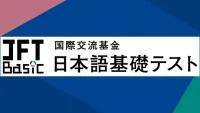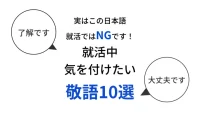Two types of Japanese language tests that foreigners who want to become (specified) technical intern trainees in Japan should take

In order for foreign nationals to work in Japan, they are required to have a certain level of Japanese language proficiency, and to prove this level, they must take a test to measure their Japanese language ability. In particular, in order to obtain the status of residence for specified skills, the standards are N4 or higher on the Japanese Language Proficiency Test (JLPT) and A2 level on the Japan Foundation Test of Basic Japanese as a Foreign Language (JFT-Basic).
However, there are several types of Japanese language examinations, and many people may be confused as to which examination they should take. In this issue, we will explain in detail the two Japanese language examinations, JLPT and JFT-Basic, that foreign nationals who wish to become (specified) technical intern trainees in Japan should take especially for working in Japan. Let's understand the outline, level, and method of taking these exams, choose the right exam for you, and proceed with your study in a systematic manner.
▼Goandup Picks Click here for recommended articles!
- Required before studying abroad! Goandup Nihongo+, an online Japanese language learning service
- This page introduces services for foreigners who wish to study in Japan or improve their Japanese language skills to learn Japanese online.
- Goandup Salon" community for foreigners living in Japan
- We introduce an online community where foreigners living in Japan can exchange information and interact with each other to support their life in Japan.
- Goandup Study" supports foreigners who want to study in Japan.
- This section introduces study abroad support services that provide comprehensive support to foreigners who wish to study in Japan, from preparation for study abroad to living in Japan.
- Where can I buy a prepaid SIM in Japan? Recommended SIM cards for foreigners are also introduced.
- How to purchase a prepaid SIM and suitable SIM cards for foreigners.
- The Complete Guide to Pocket Wi-Fi in Japan for Foreigners!
- We introduce how to select and recommend pocket Wi-Fi products that can be used conveniently in Japan.
- The Complete Guide to Finding a Job in Japan! Finding a job, changing jobs, and part-time work for foreigners
- This site provides foreigners who want to work in Japan with comprehensive information on how to find a job, recommended job sites, and other information necessary to find a job.
JLPT Outline and Levels

The Japanese Language Proficiency Test (JLPT) is currently the most well-known test in the world for measuring the Japanese language proficiency of foreigners, and those who have obtained N4 or higher can take the Japan Foundation Japanese Language Basic Test (JFT-Basic) will no longer be required to take the exam.
The Japanese-Language Proficiency Test (JLPT) was initiated in 1984 by the Japan Foundation and the Japan Educational Exchanges and Services (now the Japan Educational Exchanges and Services). Its purpose is to fairly and accurately measure and certify the Japanese language proficiency of non-native speakers of Japanese.
The test is divided into five levels from N1 to N5, with N1 being the level requiring the most advanced proficiency. Specifically, N4 is the level at which the candidate is able to read and understand sentences on familiar topics in daily life written using basic vocabulary and kanji, and understand most of the content of conversations spoken rather slowly in everyday situations. This level is considered to be the level at which one can read and understand texts on familiar topics in daily life written in basic vocabulary and kanji.
N4 level
- Can understand basic Japanese."
- Reading: "Can read and understand texts on familiar topics in daily life, written using basic vocabulary and Kanji characters."
- Listening: "I can understand most of the content of a conversation spoken somewhat slowly in everyday situations."
The JLPT has gained worldwide recognition and has become an important benchmark for learners of the Japanese language. 7,000 examinees worldwide took the JLPT when it began in 1984, but by 2023, the number of examinees had grown to over 600,000, making it the world's largest Japanese-language proficiency test. Currently, the JLPT is administered twice a year, in July and December, in 193 cities in 47 prefectures in Japan and 81 countries and regions overseas (actual results for 2022).
The examination fee is 7,500 yen (including tax) for each level in Japan, although the fee varies depending on the country or region. Applications for the examination can be made in Japan by sending an application form to a P.O. Box or online. Applications are accepted approximately 5 months prior to the test date, so be sure to prepare systematically.
For more information about the detailed test content, sample questions, and how to apply,JLPT Official Websitefor more information.
For further information related to the JLPT, please refer to the following articles.
- What is the pass rate for JLPT N1?
- The N1 is the highest level of the exam, but many people may be concerned about its pass rate and difficulty level. This article explains the pass rate for the N1 and the study time required to pass.
- What is the level difference between JLPT N1, N2, and N3?
- N1, N2, and N3 are the top three levels of the JLPT, but what is the level difference between them? This article provides a detailed comparison of the difficulty level of each level and the Japanese language skills required.
Outline and Levels of the Japan Foundation Test of Basic Japanese (JFT-Basic)

The Japan Foundation Test of Basic Japanese (JFT-Basic) is also used to assess the level of Japanese language proficiency required to obtain the "Specified Proficiency 1" status of residence.Applicants who have obtained the Japanese Language Proficiency Test (JLPT) N4 or higher are not required to take this test.
The Japan Foundation Test of Basic Japanese (JFT-Basic) is a Japanese language proficiency test developed by the Japan Foundation and is based on the idea of the "JF Japanese Language Education Standard". The test is designed to measure the Japanese communication skills required for non-native speakers of Japanese to live and work in Japan.
The JFT-Basic is positioned as one of the requirements for obtaining the status of residence for specified technical skills, and the questions are designed to simulate situations encountered in living and working in Japan. The test consists of four components: vocabulary, conversation and expression, listening comprehension, and reading comprehension, and is administered using the CBT (Computer Based Testing) method.
The passing standard is not divided into levels like the JLPT, but a single standard called "A2 level". A2 level is a level at which the candidate can understand sentences and expressions used in situations directly related to daily life, such as very basic personal and family information, shopping, neighborhood, and work, and can exchange simple information. This level is also defined as the ability to exchange simple information. The student should also be able to explain in simple terms about his/her background, personal circumstances, and direct needs.
JFT-Basic is administered not only in Japan, but also in countries such as India, Indonesia, Myanmar, and the Philippines. Since the dates and examination procedures differ in each country, it is important to check the latest information.
The examination fee is 7,000 yen (including tax) in Japan, although the fee varies depending on the country or region. Online application is available, and applications will be accepted approximately one month prior to the examination date.
For more information on JFT-Basic,The Japan Foundation Basic Japanese Language Test Websitefor more information.
Also, to learn more about JFT-Basic, please refer to the following articles.
This article provides an easy-to-understand explanation of the JFT-Basic's objectives, features, test format, and evaluation criteria. It also introduces the differences between the JFT-Basic and the JLPT, as well as points to consider when preparing for the exam, making it a must-see for those considering taking the exam.
The JFT-Basic is an important exam for foreign nationals who wish to obtain the status of residence of specified skills. Read this article to get a good overview of the exam and to prepare for it.
Serious employment support to help you realize your dream of working in Japan!

Do you want to work in Japan?
Let us "Goandup" make that dream a reality!
【 Program Features 】
✅ JLPT N3 level Japanese language acquisition
✅ Thorough preparation for the specific skills test
✅ Full support for job hunting in Japan
Business-focused one-on-one lessons will help you find a job in Japan in the shortest possible time.
【 Program Menu 】
- Individual Japanese language lessons
- Intensive curriculum to obtain N3, especially specialized lessons for business Japanese that can be used at work.
- Intensive curriculum to obtain N3, especially specialized lessons for business Japanese that can be used at work.
- Preparation for the Specific Skills Test
- Customized materials for specific skill tests will be used to focus on frequently asked questions and learning to pass the test.
- Customized materials for specific skill tests will be used to focus on frequently asked questions and learning to pass the test.
- Resume and CV support
- To create resumes and CVs tailored to Japanese corporate culture, and to brush up on self-promotion and motivation for application.
- To create resumes and CVs tailored to Japanese corporate culture, and to brush up on self-promotion and motivation for application.
- Interview Preparation
- Guidance on areas for improvement through mock interviews and feedback based on corporate interview scenarios. Learn interview etiquette and behavior unique to Japan.
- Guidance on areas for improvement through mock interviews and feedback based on corporate interview scenarios. Learn interview etiquette and behavior unique to Japan.
- career consulting
- Provide introductions to companies that match the participant's career goals, select companies to apply to, and provide advice on the level of knowledge required by the companies to which the participant is applying.
- Provide introductions to companies that match the participant's career goals, select companies to apply to, and provide advice on the level of knowledge required by the companies to which the participant is applying.
- Chat Support
- In addition to one-on-one individual lessons, we also accept casual questions via DM (visa application, living support, assistance in finding a room, etc.).
If you are serious about your career in Japan, join us now!
▶︎ for more informationclick here.
We will do our best to support your success in Japan!
summary
In this article, we introduced the two tests (JLPT and JFT-Basic) that are also requirements for foreigners who wish to work in Japan as (specified) technical intern trainees. The requirements for the specified skills are N4 for the JLPT and A2 for the JFT-Basic, but many companies use N1 as a hiring criterion when hiring foreigners. Therefore, with the ultimate goal of being hired by a Japanese company to work, we recommend that you systematically acquire the level of Japanese required for the job you wish to obtain.
Your support will help us!
Thank you for visiting Goandup Picks. Our mission is to provide you with more useful information to show the world what Japan has to offer.
Your support will help us to further enhance our activities, so please support us!






